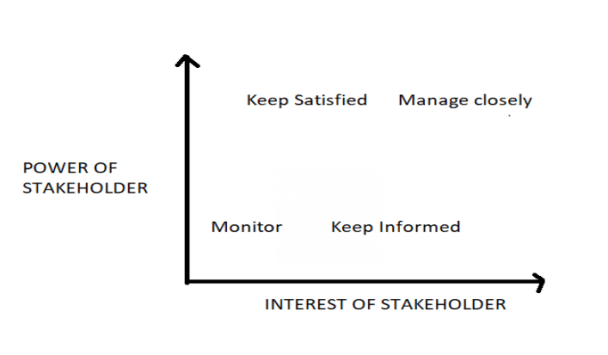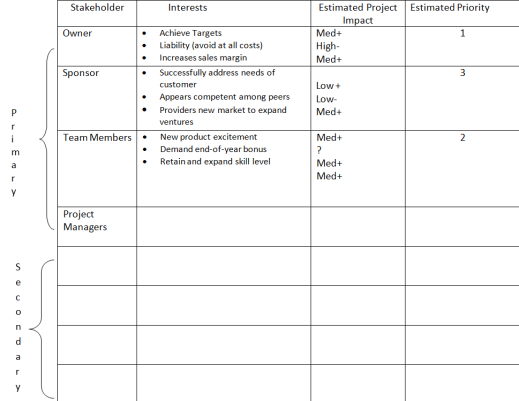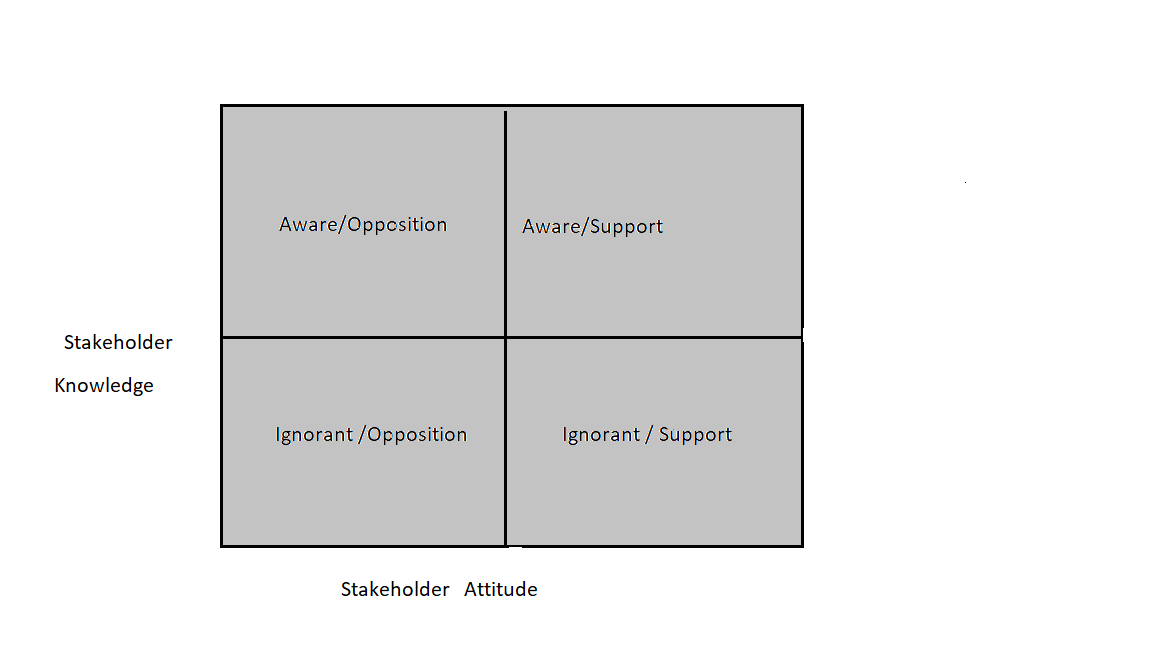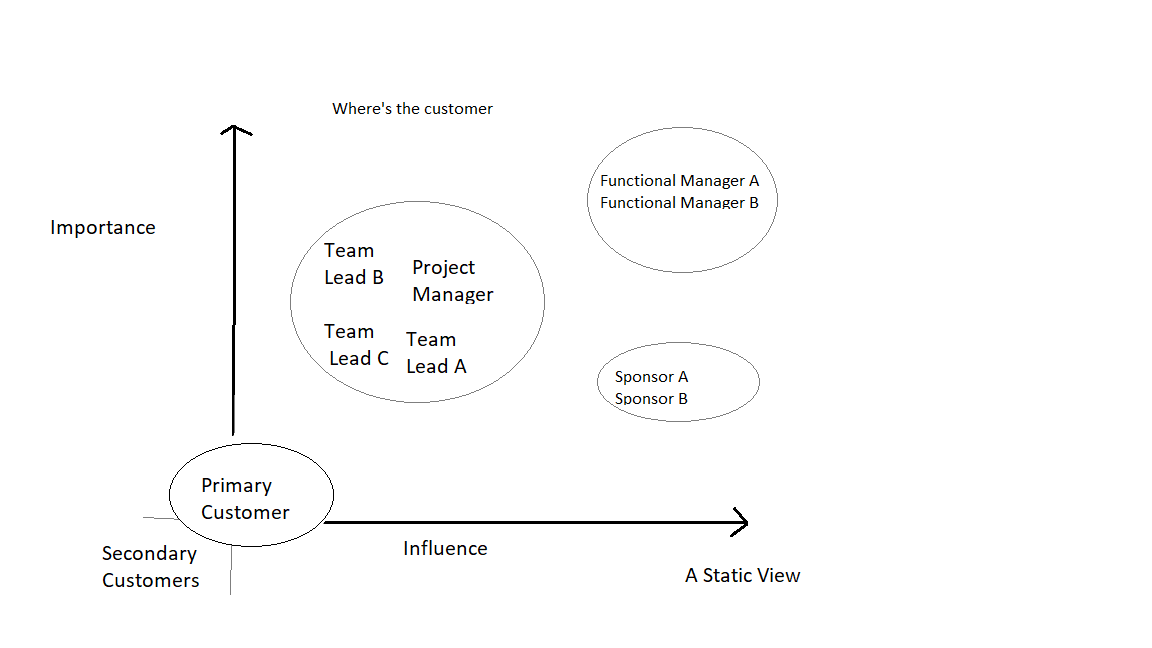September 5, 2019
Why Do You Need To Perform A Stakeholder Analysis?
This article defines stakeholder analysis and its importance in project management. It also provides information on stakeholder metrics and how to evaluate them.
Accurate project requirements are significant to deliver high-performing software within strict timelines. At times, the client does not clarify non-functional requirements so It’s import to align stakeholders with the project to understand such requirements.
Who are stakeholders?
Stakeholders are people who actively participate in project-related decisions as they’re affected by the results of project execution and results. They have their influence over the project, its deliverables, and the project team members, so their participation is crucial for successful project delivery.
What is stakeholder analysis?
Stakeholder analysis is used to identify stakeholders and analyze their needs to develop and deliver a quality product in the first attempt. It includes collecting qualitative information to determine which stakeholder interest should be examined. The purpose of performing stakeholder analysis is to have a strategic view of various possible stakeholder issues.
Why stakeholder analysis is important?
The reasons for knowing stakeholders can map to the following benefits:
Shaping the project
Understanding stakeholder viewpoint helps in identifying risk, requirements, and required to ease schedule management.
Winning additional benefits
Knowing the project stakeholder will help in managing expenditure where it is required.
Building trust
Useful stakeholder analysis will help you in identifying and understanding who all need to be consulted to find the various aspects of project development.
Stay ahead of the competition
The attitude of stakeholders has a significant impact on project success and related consequences. Anticipating stakeholder expectations and providing results can win you new projects as well.
How stakeholder analysis is performed?
The process of stakeholder analysis consists of the following steps:
1) Identify the stakeholders
There are two types of stakeholders
External stakeholders
They are the individuals or groups outside a business or project, but who can affect or be affected by the business or project.
Internal stakeholders
They are the people who are working in an organization or project.
The quick checklists which can help you in identifying various categories of stakeholders are:
- Executives or project sponsors from the parent organization are stakeholders.
- Customers who have paid for the product under development are stakeholders.
- The project teams who are producing the product are stakeholders.
- Department managers or technical experts required for their guidance are also stakeholders.
- Investors of the project who are funding the project are stakeholders.
- Government bodies those are responsible for regulating and issuing permits for the project.
- Need for suppliers to provide external products and services for the project.
- Any local committee or board required for approval on the project’s deliverables.
2) Prioritize the stakeholders
It is also called stakeholder analysis metrics where metrics are defined to prioritize and categorize stakeholders. This method is defined as per their interest levels, influence, impact, a relative priority. This categorization will help us in understanding their expectations and leveraging maximum benefit and can mitigate the risk of the potential impact on software development.
There are primarily five ways to prioritize stakeholders based on various parameters.
Identify stakeholders through various analysis metrics:
The basic stakeholder Analysis technique
This technique is defined by Bryson to evaluate stakeholder using sentiments.
This analysis can be done at the start or during the project. The study uses a flip chart to represent stakeholder viewpoints about the organization against his expectations. The chart has the left column for the parameters for testing the expectations of the project. The right side uses three colors Red(poor), Amber(fair), and Green(right) dots to mark their value for each expectation. Excel sheets can replace the flip charts.
The power and interest-based stakeholder analysis
This method takes into account the influence and interest-based matrix for evaluating stakeholders. The main objective of using this technique is in reviewing the sentiments of most influential stakeholders for maximum benefits and success. To be explained through a matrix of interest vs. power.
 There are four categories to define the critical stakeholders for the project:
There are four categories to define the critical stakeholders for the project:
The upper-left quadrant represents people with more power, but less interest should be satisfied to ensure no roadblocks in the project.
The upper-right quadrant defines people with high power and high interest who monitor the growth closely and influence the project.
The lower-left quadrant defines low power and low interest where people should be monitored to ensure seamless project delivery.
The lower-right quadrant defines low power and high interest where people should be informed about project details,
Finding the primary and secondary stakeholders through a grid:

This method identifies stakeholders as primary and secondary based on their interest, estimated project delivery, and the priority levels for each one of them.
Based on stakeholder importance and influence
Stakeholder interest is related to different project phases, and the change in interest influences project from start to end.
Various annotations of positive, negative, and unknown are aligned to project success to different criteria with interest. With different needs same intensity will not be applied.
Importance and commitment
This metric considers the importance level of importance for each stakeholder and their level of commitment in the project.
Stakeholders with low commitment and low importance are called cheerleaders.
 Stakeholder knowledge and attitude
Stakeholder knowledge and attitude
 This grid defines stakeholder knowledge of a project and the respective attitude of the matrix. This method uses a model rather than using a range to describe the impact of attitude. Cheerleaders are supportive and highly informed about the project.
This grid defines stakeholder knowledge of a project and the respective attitude of the matrix. This method uses a model rather than using a range to describe the impact of attitude. Cheerleaders are supportive and highly informed about the project.
Stakeholders who are supportive but lack project knowledge needs to be nurtured to make them aware of project details.
Stakeholders who are unaware and opposed requires attention as the team can change their attitudes. It also defines a contingency plan to identify and reduce negative stakeholders.
3) Understanding the stakeholders
The list of questions can help you in understanding the various types of stakeholders in the project:
- What is their interest in the project?
- How the project results affect their life?
- What is the best way to engage and commit stakeholders?
- What motivates stakeholders?
Stakeholder analysis example:
 A use case for stakeholder analysis
A use case for stakeholder analysis
In a situation such as a team is burned-out, we had to work on additional deliverables due to the presence of crucial risks in the project. The Requirements to mitigate the risk are vague. The stakeholder’s matrix also highlights the absence of primary customers from the discussions, and they are given little importance. The customer is also not involved in the implementation phase; rather he was only involved in the design phase. Functional managers have more influence on the project. The manager tries to influence the project sponsor by their side.
The stakeholder analysis process can effectively handle this situation.
Conclusion
Performing stakeholder analysis is a great way to deliver a high-quality product. It helps in understanding various stakeholders of the product and to what extent they can affect the project. Stakeholder analysis uncovers and removes multiple barriers in understanding the project’s progression, stakeholder analysis. It also eliminates the roadblocks in releasing successful projects by getting information about project supporters, opponents, and their levels of importance in the project.
Share article
